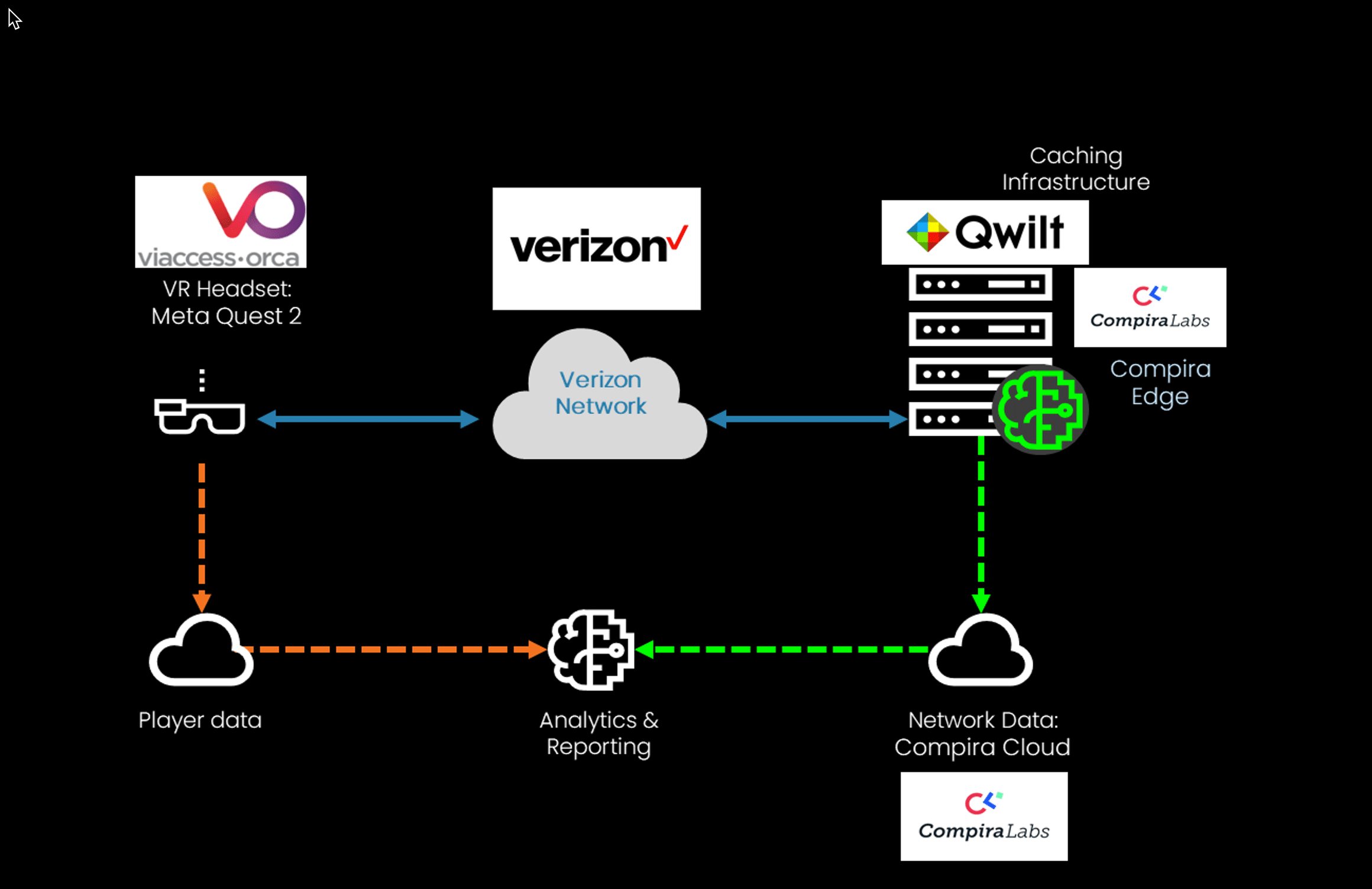Virtual Reality (VR), Augmented Reality (AR), and Mixed Reality (MR), and other forms of Extended Reality (XR), are beginning to drive deep immersive experiences. For example, AR/VR have reached a broad range of applications across various industry verticals including sports & entertainment, healthcare, automotive, aviation, manufacturing, real-estate, education, etc. However, to ensure networks are prepared and optimized for this new era of content, we looked at what tools and workflows might be leveraged to ensure those networks are prepared and optimized for the new era of XR.
Why We Decided To Run Tests On VR Streaming
The consumer demand for immersive video requirement is growing. To meet that demand, the network will need to evolve and be more dynamic to achieve the right QoE for a specific VR application under a specific network condition. For example, VR content can be directly streamed to the headset and that requires a constant throughput in excess of 25Mbps and up to 50Mbps. This also requires there is seamless availability of bandwidth to ensure a player using a VR headset does not experience latency or jittery throughput. Another example is that VR applications can be real-time, such as cloud-based gaming and other live events requiring a lot of unimpeded bandwidth. These examples point to the need for consistent high throughput with ultra-low latency along with symmetrical up and down speeds for 2-way communications. Besides of course, a stable and a reliable network.
How We Designed The Test And What We Measured
In a recent proof of concept testing, we considered a use case in which we observed on-path congestion such as packet loss/delays, throughput, and jitter. We collected data from the end-user devices (head-mounted VR devices) and from the content servers, both on-net caching-servers and content servers outside of the ISP’s network. We analyzed the two data sets to develop meaningful correlation on end-user quality of experience when the network is free of congestion and when experiencing congestion (artificially induced for the purposes of experimentation) causing either packet loss and/or increased latency which results in increased roundtrip time (RTT) and a drop in throughput. We also employed different congestion control algorithms such as TCP cubic, Bottleneck Bandwidth and RTT (BBR), and Performance-oriented Congestion Control. Each of these congestion control algorithms exhibited different behavior in different network condition.

In the POC, we streamed 4K and 8K VR content to the VR head-mounted devices in both standard and adaptive bit rates from the ISP-hosted caches (on-net caching) and caching servers outside of the ISPs network. From the client-side, we collected the following data:
- Average bit-rate (the bitrate shifts within the player are a good indicator of overall throughput);
- Rebuffering ratio (this is a ratio between amount of time the playback buffered and the total playtime); and
- Video start-up time (this is the time it takes for the video playback to start once the user initiates video playback).
The granularity of the data was at the HTTP session level. On the network-side, we looked at transport level and collected the following data:
- Round-trip time (the RTT is the duration, measured in seconds, from when the VR player sends a request to when it receives a response from the server);
- Throughput (in our experiment, this was the measurement of total bytes received by a VR player over the duration of video playback); and
- Packet loss (the measurement of how many packets were dropped during the entire TCP session).
What We Concluded From Testing
In summary, we observed VR content is extremely sensitive to delivery bandwidth and latency and type of congestion control mechanism used showed varying impacts to VR QoE. We also concluded that visibility into network performance analytics, combined with view into the end-user QoE, can help identify issues which provide an opportunity to customize congestion control at the last mile and gain efficiencies from the network to achieve optimal immersive video experience. A whitepaper detailing the test and results will be available in December of 2023 on the SVTA website. In the meantime, you can get more details on the whitepaper (and signup to be notified when it’s published).
About The Immersive Video Study Group
The Immersive Video Study Group (https://www.svta.org//working-group/immersive-video/) within the SVTA focuses on understanding the immersive video marketplace and how it is impacting traditional video experiences. The group does both market analysis as well as conducts hands-on proof of concepts (PoC) and documents results to make recommendations as appropriate.

Sanjay Mishra
Sanjay is an accomplished telecommunications professional with extensive experience in launching new and strategic products and services. He has a laser sharp focus on technology innovation in areas of web-based media and cloud-based platforms. Sanjay is also skilled at service and product definition, system and network architecture, market and technology assessment, and business process engineering. Sanjay also holds the patent for innovative design of enabling a mechanism for online ordering content such as video-on-demand. [US Patent: 9446261]
-
Jason Thibeault
-
Jason Thibeault
How do you make your streaming viewers happier, so they consume more content and keep…
-
Pierre-Louis Theron
Architecting video delivery to handle skyrocketing demand In recent years, content providers have faced unprecedented…






